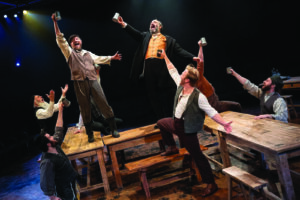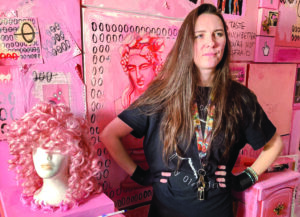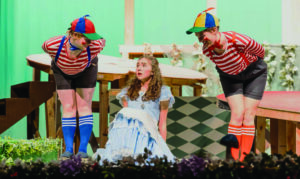The first show ever of its kind is a new exhibition by Belgium and Netherland women artists of the 17th and 18th centuries at the National Museum of Women in the Arts, a spectacular display of works loaned by 50 museums and private institutions from around the globe.
Many pieces in the survey, “Antwerp to Amsterdam, 1600-1750,” are presented in the U.S. for the first time.
Who knew there were so many female artists in those centuries? And there are many more, yet unaccounted for.
Their male counterparts of the era, Peter Paul Rubens, Johannes Vermeer and Rembrandt van Rijn are the ones we recognize, but these female names broaden our scope of artists who excelled at painting, printmaking, sculpture, paper cutting, calligraphy, a bit of lace and embroidery, and even some apparel, all on display.
Judith Leyster (1609-1660) is one name becoming more commonplace and she is here with her self-portrait (c. 1630) borrowed again from the National Gallery of Art.
She is found in every major show of the period anywhere, her travels to museums perhaps matching those of Kash Patel on the private FBI plane he flies at taxpayers’ expense to visit his Nashville girlfriend.
Happily we learn from museum senior curator Virginia Treanor that these artists won praise and recognition during their lifetimes.
Portraits depict Leyster, Maria Schalcken (1645-1690) and Maria van Oosterwijck (1630-1693) in fine clothing, not usually associated with the “messy work of painting,” but reflecting the upper classes to which they wished to belong and many did, for who had time to follow passions when they were working and taking care of families?
It’s a huge exhibition with 150 works by 40 artists, filling an entire floor at the museum, arranged thematically, one gallery titled “Choices” about matters facing women then and now: To paint or not to paint? Focus on the family? Do both?
Rachel Ruysch (1664-1750) had “at least” 10 children, Treanor writes, but still painted for more than 60 years! When she died, she was honored by no fewer than 11 poets who wrote poems about her. Three of her works are in the show.
Lower-class female artists are not ignored here and are seen in the large oil (100 x 90 in.) Johannes de Mare painted in 1676, “Maiden’s House,” of about 100 and more female orphans hard at work, embroidering. It greets visitors upon entering the galleries.
Examples of lace of the period are included although names of lower-class artists are not known.
Textiles were another medium in which women excelled, obtaining higher prices for them than those paid for paintings, a difference from today.
Treanor says Joanna Koerten (1650-1715) was paid more than 4,000 guilders for a woven silk she made for the Holy Roman Empress or double what Rembrandt likely received (1,600 guilders) for his “The Night Watch” (1642).
All girls then were expected to learn sewing like I was way back in the eighth grade in North Carolina, a class I abhorred, stitching in a sleeve backwards to “show ‘em!” and earning a “D” in the class. Tsk, tsk. (Surely, NC has lifted that dark age requirement by now!)
This period was formerly known as the “Dutch Golden Age” which the museum says is “an outdated term” (politically incorrect?) because it “obscures” circumstances giving rise to a “luxury economy,” colonialism and social hierarchies, like gender discrimination.
As to be expected, the women’s works were sometimes attributed to males, like Leyster’s, often credited to Frans Hals or her husband, Jan Miense Molenaer.
And it wasn’t until 2006 (!) that Maria Schalcken received acknowledgement for her “Self-Portrait in Her Studio” (c. 1680) which graces the cover of the catalogue (304 pages, $60 in the shop).
“Women Artists” closes Jan. 11 for its opening next spring at the Museum of Fine Arts in Ghent, Belgium, the exhibition’s co-organizer.
While visiting the NMWA, don’t miss photography art by Tawny Chatmom of Baltimore on the fourth floor.
Admission is free on the first Sunday and second Wednesday of every month at NMWA where admission costs for non-members are: $16, general; $13, seniors, D.C. residents, military, students, educators and more. Free for those under 21, the handicapped, and SNAP recipients. 10 a.m. – 5 p.m., Tuesday – Sunday. Closed on major holidays. 1250 New York Ave., NW, Washington, D.C. 20005. nmwa.org. 202-783-5000. The closest Metro stations are McPherson Square and Metro Center.












